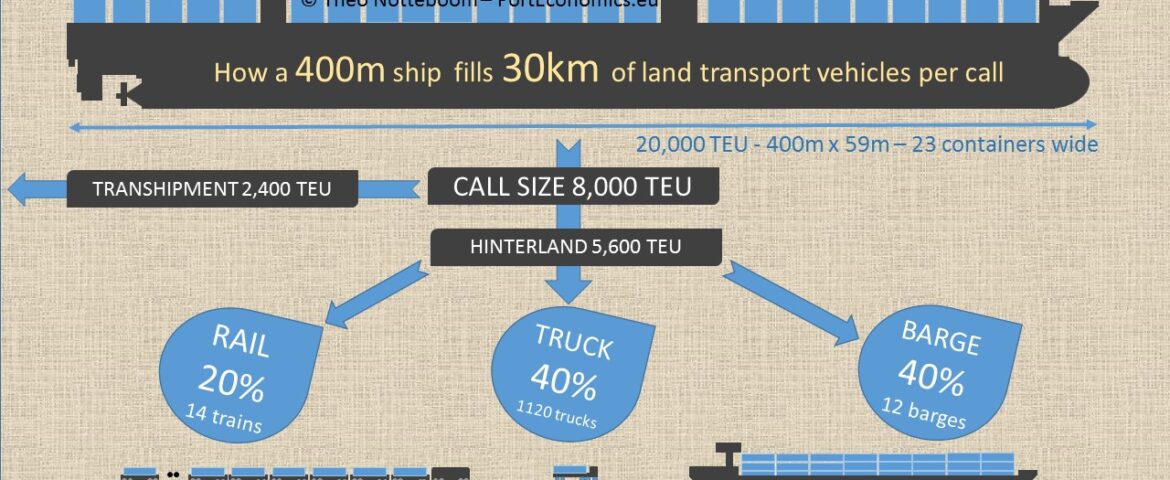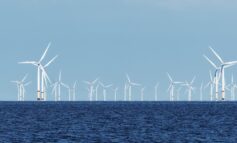By Theo Notteboom
Container vessels of more than 19,000 TEU are already operational on the Europe-Far East trade. The CSCL Globe and MSC Oscar are notable examples. Ships of over 20,000 TEU have been ordered by a number of carriers such as OOCL. The chart shows the implication of a visit of such a mega vessel to the port of Antwerp or Rotterdam, two of the largest container ports in Europe. A call of a 20,000 TEU vessel is expected to result in an average call size of 8,000 TEU. Some 70% of that volume is gateway cargo, the remaining 30% involves transhipment cargo.
The port authorities of both Antwerp and Rotterdam have expressed their intention to evolve to an inland modal split in container transport of 40/40/20: maximum 40% by truck, minimum 40% by barge and minimum 20% by rail. Under such a scenario, the infographic shows we would need 1120 incoming and outgoing trucks, 14 average-sized container shuttle trains and 12 average-sized barges to guarantee the inward and outward distribution of the containers. If you line-up all these transport vehicles, we obtain an uninterrupted queue of 30 km. As ship sizes increase, scale increases in land transportation are needed by deploying more and bigger barges and longer trains between seaports and inland distribution platforms. Also hinterland transport has to undergo an upscaling.













